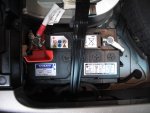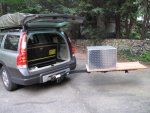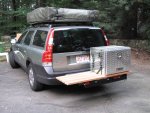I'm pretty new to this, so please pardon my naivete...
I want to install a second battery in my wagon, to run electrical stuff, on some touring trips of unknown duration, I will need to run a laptop for a few hours a day, charge up a lot of photo gear each night, use a photo printer on occasion, run a fan in a propane heater some times, a regular fan sometimes, battery chargers for camp lanterns and misc. Gennerally, nothing enormous but lot's of litte things all the time. Then again, maybe a bed warmer (6 amp) on some nights. I think the simplest route to fill my needs is to get a deep cycle battery and connect it to my alternator and existing battery, using an isolator. My existing alternator is rated at 160 amps. Can anyone give me advice, and perhaps tell what you make of these products, or perhaps some others, and reccommend a battery, too...
http://www.e-marine-inc.com/products/alternators/isolators.html
http://www.powerstream.com/battery-isolator.htm
Thanks
I want to install a second battery in my wagon, to run electrical stuff, on some touring trips of unknown duration, I will need to run a laptop for a few hours a day, charge up a lot of photo gear each night, use a photo printer on occasion, run a fan in a propane heater some times, a regular fan sometimes, battery chargers for camp lanterns and misc. Gennerally, nothing enormous but lot's of litte things all the time. Then again, maybe a bed warmer (6 amp) on some nights. I think the simplest route to fill my needs is to get a deep cycle battery and connect it to my alternator and existing battery, using an isolator. My existing alternator is rated at 160 amps. Can anyone give me advice, and perhaps tell what you make of these products, or perhaps some others, and reccommend a battery, too...
http://www.e-marine-inc.com/products/alternators/isolators.html
http://www.powerstream.com/battery-isolator.htm
Thanks
Last edited:





